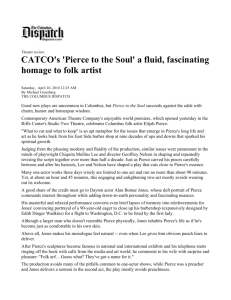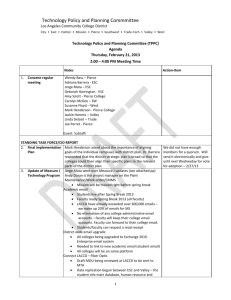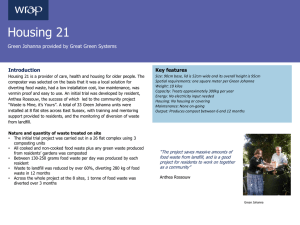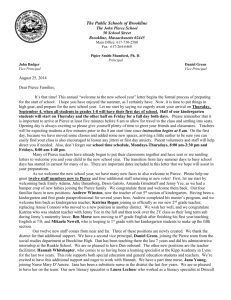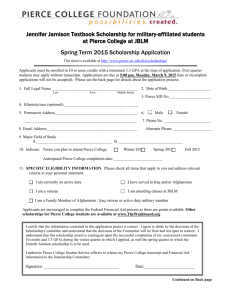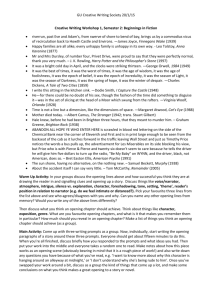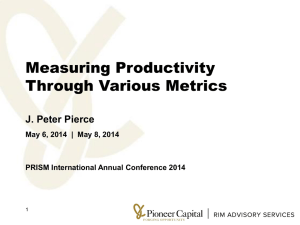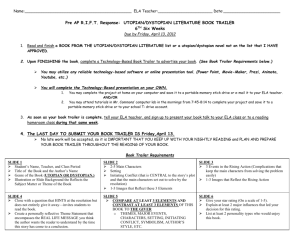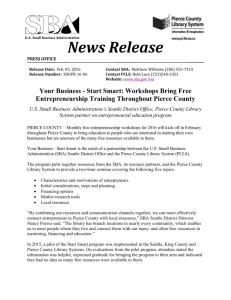Pierce County to work on reducing all waste, not
advertisement
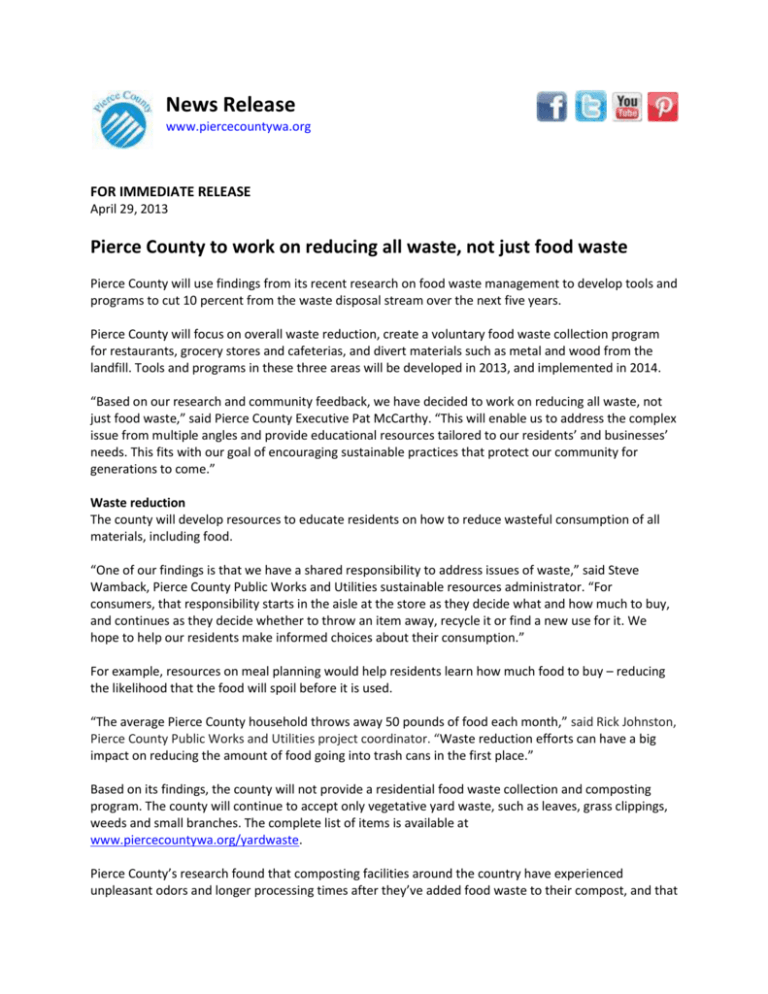
News Release www.piercecountywa.org FOR IMMEDIATE RELEASE April 29, 2013 Pierce County to work on reducing all waste, not just food waste Pierce County will use findings from its recent research on food waste management to develop tools and programs to cut 10 percent from the waste disposal stream over the next five years. Pierce County will focus on overall waste reduction, create a voluntary food waste collection program for restaurants, grocery stores and cafeterias, and divert materials such as metal and wood from the landfill. Tools and programs in these three areas will be developed in 2013, and implemented in 2014. “Based on our research and community feedback, we have decided to work on reducing all waste, not just food waste,” said Pierce County Executive Pat McCarthy. “This will enable us to address the complex issue from multiple angles and provide educational resources tailored to our residents’ and businesses’ needs. This fits with our goal of encouraging sustainable practices that protect our community for generations to come.” Waste reduction The county will develop resources to educate residents on how to reduce wasteful consumption of all materials, including food. “One of our findings is that we have a shared responsibility to address issues of waste,” said Steve Wamback, Pierce County Public Works and Utilities sustainable resources administrator. “For consumers, that responsibility starts in the aisle at the store as they decide what and how much to buy, and continues as they decide whether to throw an item away, recycle it or find a new use for it. We hope to help our residents make informed choices about their consumption.” For example, resources on meal planning would help residents learn how much food to buy – reducing the likelihood that the food will spoil before it is used. “The average Pierce County household throws away 50 pounds of food each month,” said Rick Johnston, Pierce County Public Works and Utilities project coordinator. “Waste reduction efforts can have a big impact on reducing the amount of food going into trash cans in the first place.” Based on its findings, the county will not provide a residential food waste collection and composting program. The county will continue to accept only vegetative yard waste, such as leaves, grass clippings, weeds and small branches. The complete list of items is available at www.piercecountywa.org/yardwaste. Pierce County’s research found that composting facilities around the country have experienced unpleasant odors and longer processing times after they’ve added food waste to their compost, and that the compost produced often can’t be sold. Voluntary program for businesses The county will, however, create a voluntary program for restaurants, grocery stores and cafeterias that would allow them to have food scraps collected and composted. The type of food scraps collected will be only those that are compatible with current composting processes, such as fruit and vegetable trimmings and coffee grounds. “This program will allow businesses to divert food scraps from their trash containers but won’t affect the quality of our finished compost,” said Johnston. “It also won’t create negative impacts in the neighborhoods near the composting facilities.” PREP compost, made from yard waste collected and composted in Pierce County, is high quality and in demand. The county found that adding food waste to PREP reduced its quality while adding to the cost of operating the compost facilities. Landfill diversion The county plans to work with the private landfill operator to find ways to divert materials such as wood and metal from the landfill. These materials don’t break down quickly and take up a lot of space in the landfill. “The popular assumption is that diverting food waste from the landfill to a composting facility will save landfill space for the future,” Johnston said. “The food waste study found this isn’t true, because food breaks down so quickly that any space it takes up is quickly recovered. We need to focus on diverting materials such as wood and metal.” Research and public outreach Pierce County began investigating reasonable options for food waste management in 2010 when a waste audit found that nearly one-third of Pierce County’s waste is food, making it the largest category of material entering the landfill. The county then began a year-long study of available options to manage and reduce food waste, and presented three options in 2012 at 18 public workshops held around the county to gather feedback. An online workshop was created for those unable to attend in person. More than 3,000 residents participated and offered feedback. “Waste management is a complex issue, so it was important that we researched the problem and gathered feedback from the community before implementing any new programs,” Wamback. “Feedback from our residents was instrumental in helping develop these recommendations for managing our overall waste.” Pierce County’s solid waste management system includes all unincorporated areas of the county and all cities and towns except for Tacoma, Auburn, Ruston and Joint Base Lewis-McChord. More information about the recommendations is available at www.piercecountywa.org/foodwaste. MEDIA CONTACTS: Sheryl Rhinehart, Public Works and Utilities outreach coordinator (253) 798-4655 srhineh@co.pierce.wa.us Rick Johnston, Public Works and Utilities project coordinator (253) 798-4657 rjohnst@co.pierce.wa.us

